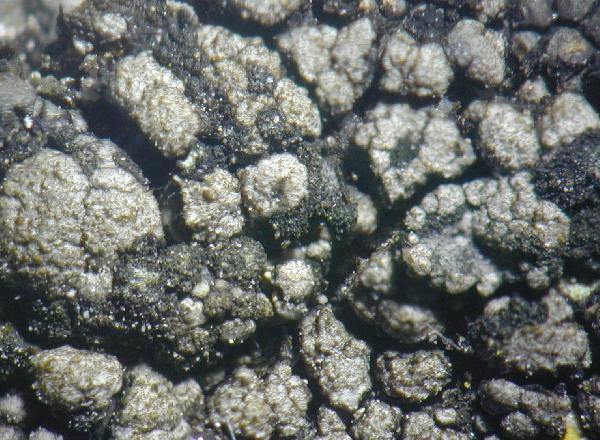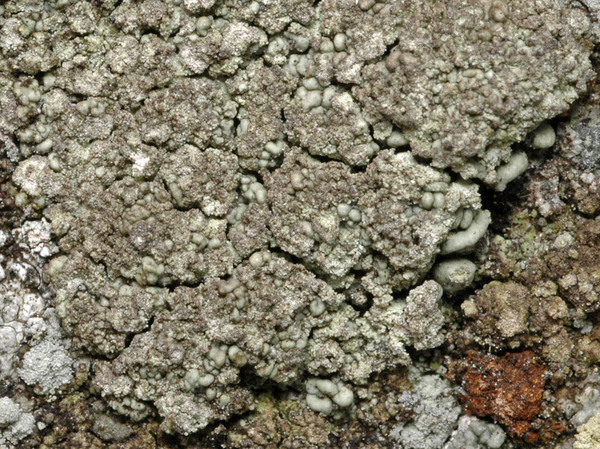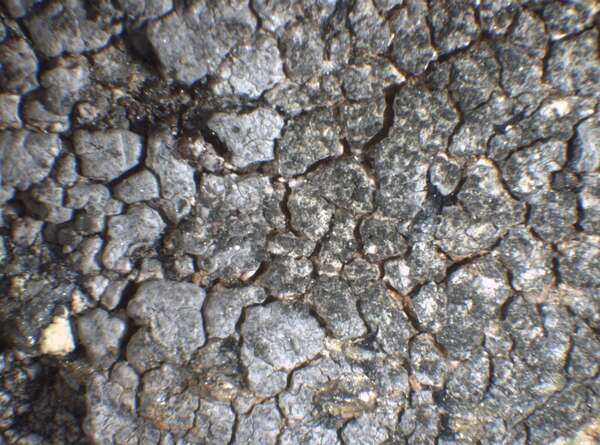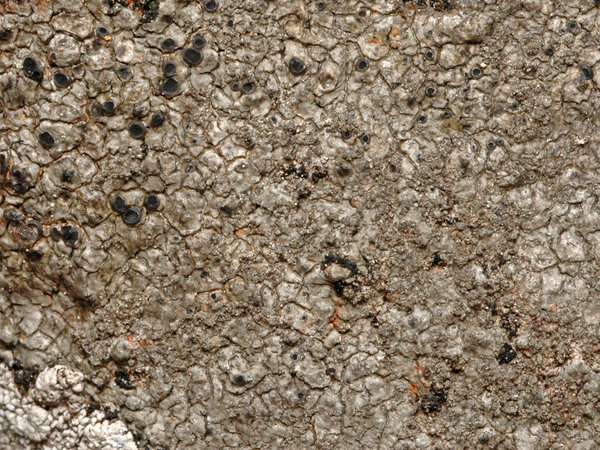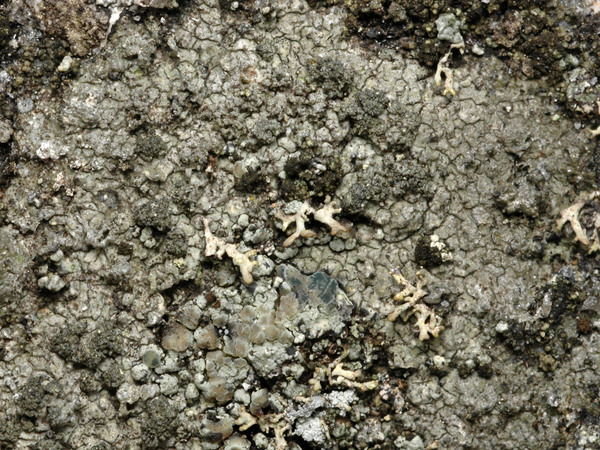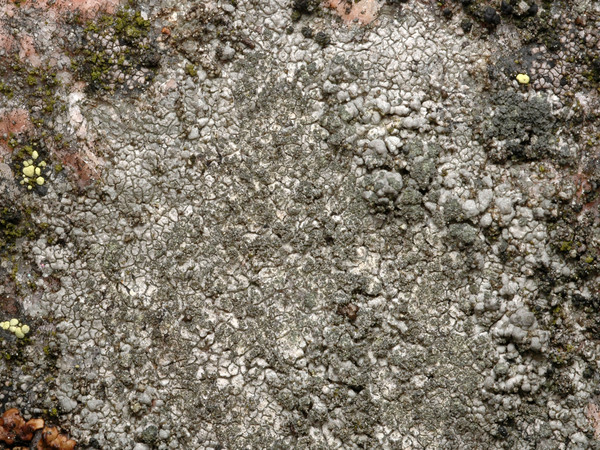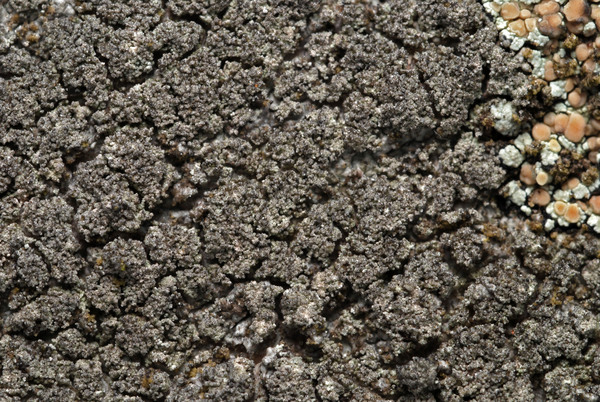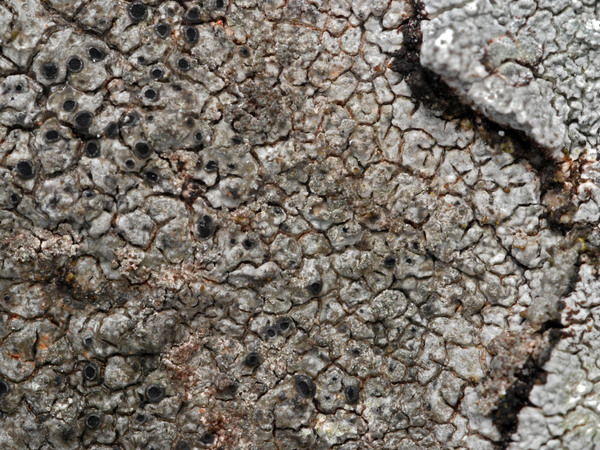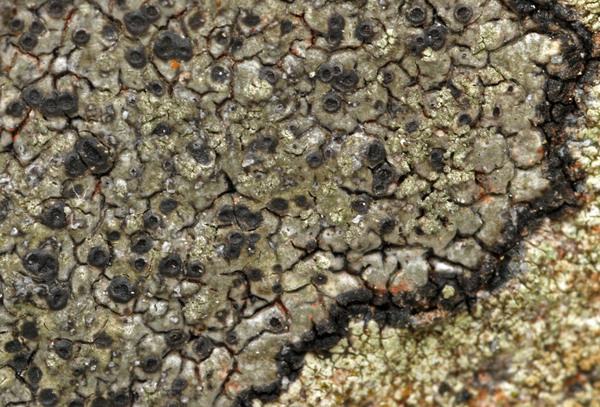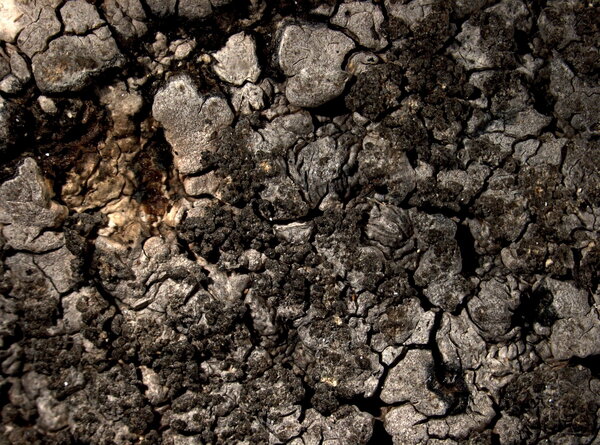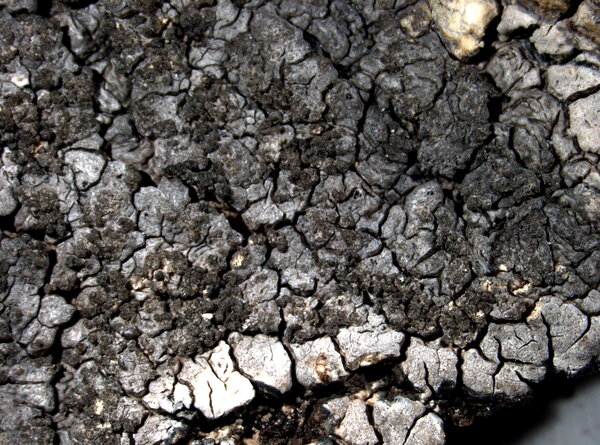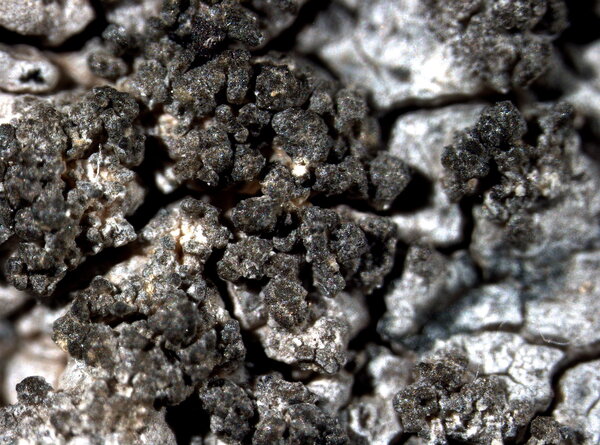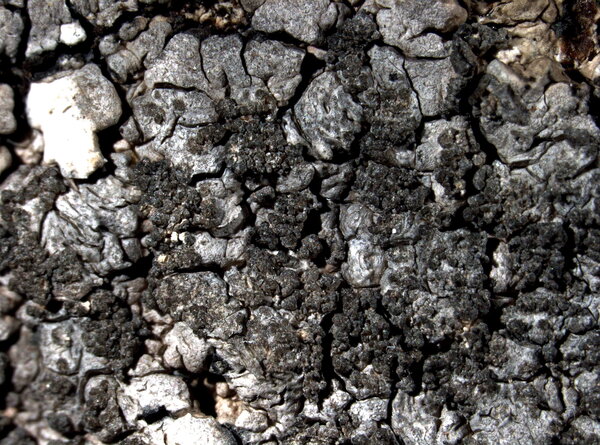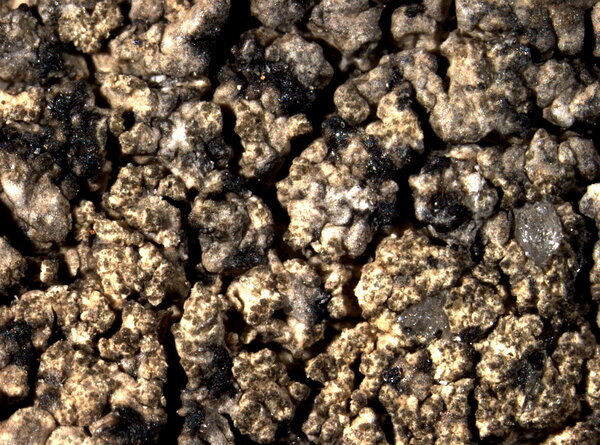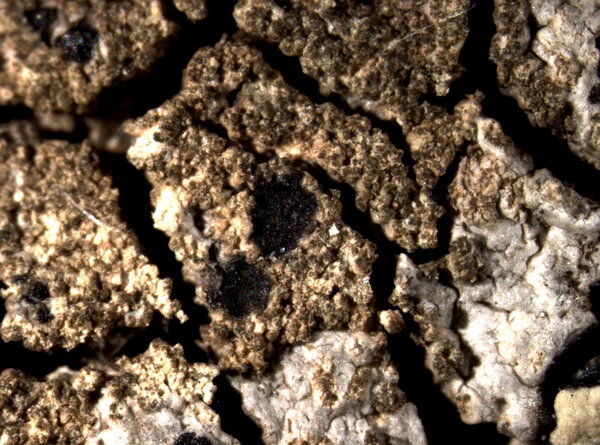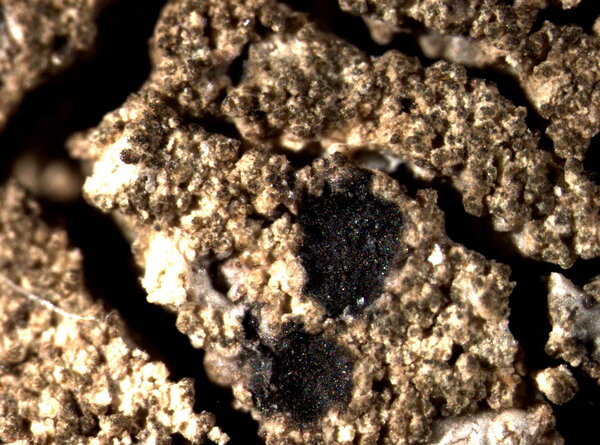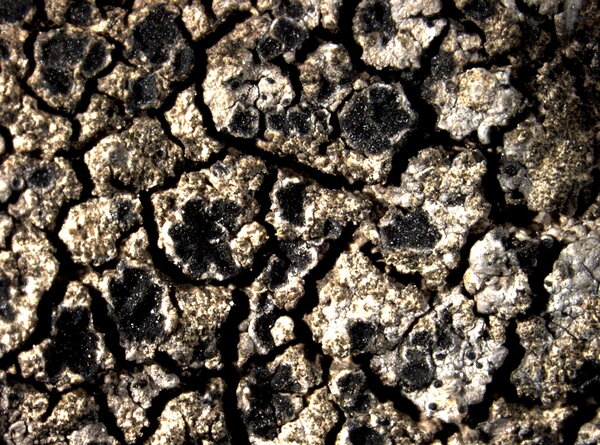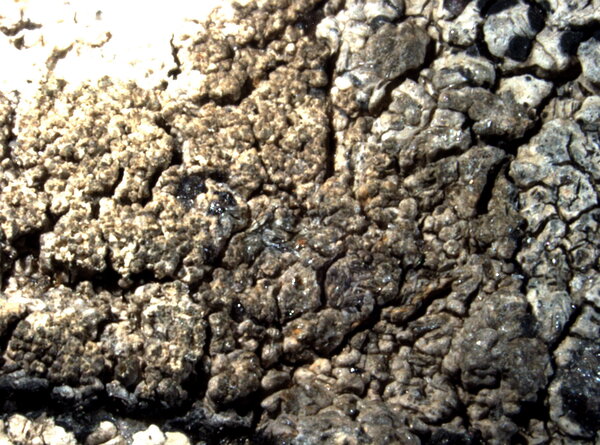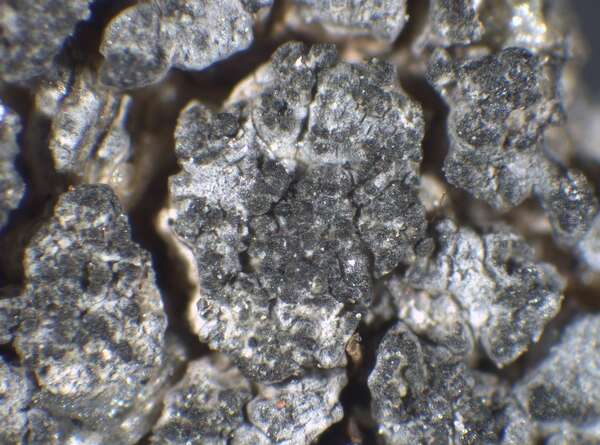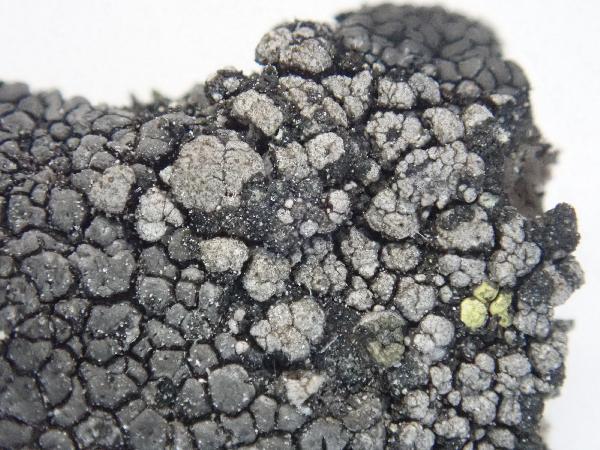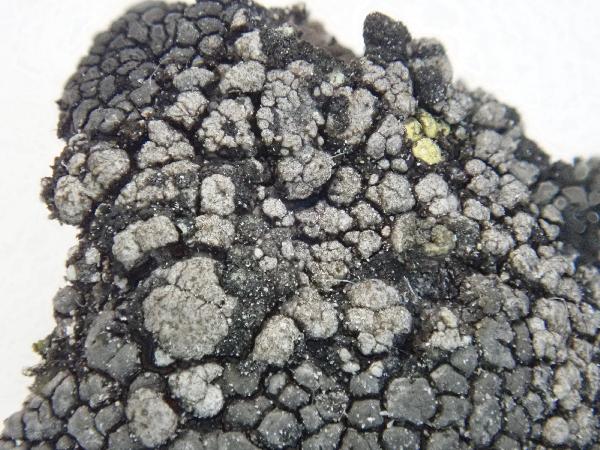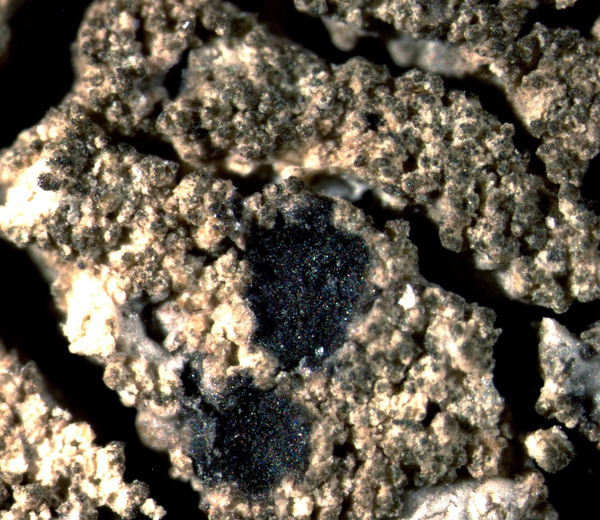Sagedia simoënsis (Räsänen) A. Nordin, Savić & Tibell
Mycologia, 102: 1346, 2010. Basionym: Aspicilia simoënsis Räsänen - Meddeland. Soc. Fauna Fl. Fenn., 1: 39, 1925.
Synonyms: Aspicilia montana (H. Magn.) Creveld; Lecanora bahusiensis H. Magn.; Lecanora isidiata (H. Magn.) H. Magn.; Lecanora simoënsis (Räsänen) Zahlbr.; Lecanora simoënsis var. isidiata H. Magn.; Lecanora variegatula H. Magn.
Description: Thallus crustose, episubstratic, areolate, pale grey to grey, sorediate-isidiate, the areoles angular, 0.3-0.5 mm wide, often finely subdivided into smaller units, bearing orbicular, well-delimited, dense clusters of coarsely granular to coralloid, dark grey isidioid outgrowths later breaking down into soredia-like propagules. Uppermost layer of cortex without the Subdepressa-brown pigment; medulla white, I-. Apothecia rare, lecanorine-aspicilioid, 0.4-1 mm across, immersed in the thallus, with a concave to flat, black disc and a thin thalline rim. Epithecium olive-green, N+ emerald green; hymenium colourless; paraphyses simple or sparingly branched, anastomosing, moniliform in upper part, the apical cells up to 3 µm wide; hypothecium colourless. Asci 8-spored, clavate, the thin outer coat K/I+ blue, the wall and the apical dome K/I-. Ascospores 1-celled, hyaline, ellipsoid, 15-22 x 8-12 µm. Photobiont chlorococcoid. Spot tests: thallus K+ yellow turning red (needle-like red crystals) or rarely K+ yellow-orange, C-, KC-, P+ bright to golden yellow. Chemistry: norstictic acid and/or stictic acid.
Growth form: Crustose
Substrata: rocks
Photobiont: green algae other than Trentepohlia
Reproductive strategy: mainly asexual, by isidia, or isidia-like structures (e.g. schizidia)
Commonnes-rarity: (info)
Alpine belt: absent
Subalpine belt: very rare
Montane belt: very rare
Dry submediterranean belt: absent
Humid submediterranean belt: absent
Padanian area: absent
pH of the substrata:
1 2 3 4 5
Solar irradiation:
1 2 3 4 5
Aridity:
1 2 3 4 5
Eutrophication:
1 2 3 4 5
Poleotolerance:
0 1 2 3
Altitudinal distribution:
1 2 3 4 5 6
Rarity
absent
extremely rare
very rare
rare
rather rare
rather common
common
very common
extremely common
Loading data...
Occurrence data
Predictive map
Growth form: Crustose
Substrata: rocks
Photobiont: green algae other than Trentepohlia
Reproductive strategy: mainly asexual, by isidia, or isidia-like structures (e.g. schizidia)
Commonnes-rarity: (info)
Alpine belt: absent
Subalpine belt: very rare
Montane belt: very rare
Dry submediterranean belt: absent
Humid submediterranean belt: absent
Padanian area: absent
pH of the substrata:
| 1 | 2 | 3 | 4 | 5 |
Solar irradiation:
| 1 | 2 | 3 | 4 | 5 |
Aridity:
| 1 | 2 | 3 | 4 | 5 |
Eutrophication:
| 1 | 2 | 3 | 4 | 5 |
Poleotolerance:
| 0 | 1 | 2 | 3 |
Altitudinal distribution:
| 1 | 2 | 3 | 4 | 5 | 6 |
Rarity
absent
extremely rare
very rare
rare
rather rare
rather common
common
very common
extremely common
Loading data...
Occurrence data
Predictive map


